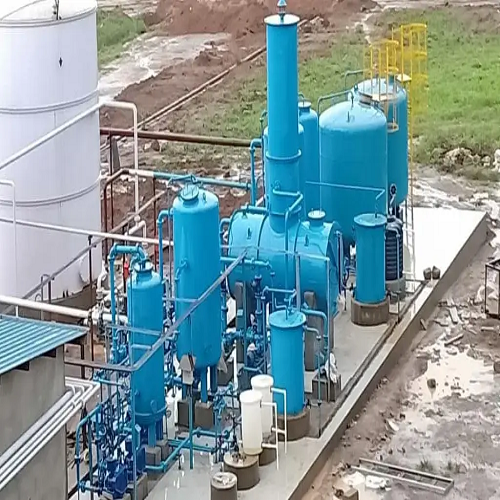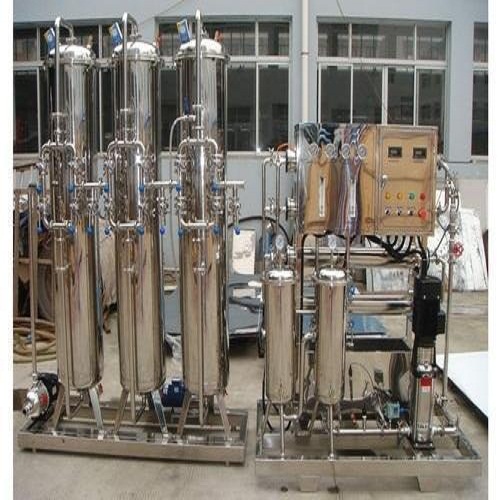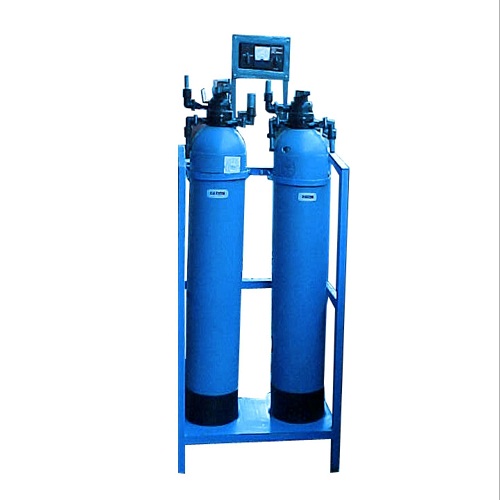
our category
DEMINARALISATION PLANT (DM)
A Demineralization (DM) Plant is a water treatment system designed to remove dissolved minerals and salts from water, making it suitable for various industrial, commercial, and laboratory applications where high-purity water is required. Demineralization (also known as deionization) involves the removal of dissolved minerals like calcium, magnesium, sodium, chloride, sulfate, and other ions through a combination of physical and chemical processes, primarily ion exchange.
Enquire Now
Key Components of a Demineralization (DM) Plant:
-
DM Vessels: The core components of a DM plant are the vessels that hold the ion-exchange resins. These vessels are typically made of fiberglass, stainless steel, or other corrosion-resistant materials. The water passes through these vessels, where the resins remove unwanted ions to produce purified water.
-
Ion Exchange Resin: Ion-exchange resins are the heart of the demineralization process. The resins are made of small beads or particles that attract and hold onto specific ions, exchanging them for other ions, such as hydrogen (Hâº) and hydroxide (OHâ»), to remove hardness and mineral salts from water.
-
Cation Resin: Cation resins are used to remove positively charged ions (cations) such as calcium (Ca²âº), magnesium (Mg²âº), sodium (Naâº), and iron (Fe²âº). When water passes through the cation resin, these ions are replaced with hydrogen ions (Hâº).
-
Anion Resin: Anion resins remove negatively charged ions (anions) like chloride (Clâ»), sulfate (SOâ‚„²â»), bicarbonate (HCO₃â»), and nitrate (NO₃â»). These ions are replaced with hydroxide ions (OHâ»), producing pure water after the exchange.
-
Mixed Bed Resin: A mixed bed is a combination of cation and anion resins in a single vessel, used to achieve the final stage of demineralization. Mixed bed units provide high-quality water as the cation and anion resins are interspersed, allowing for more efficient ion exchange and complete removal of ions.
-
Regeneration System: Over time, the ion-exchange resins become saturated with the ions they have removed from the water. The regeneration system uses chemicals like hydrochloric acid (HCl) for the cation resin and sodium hydroxide (NaOH) for the anion resin to restore the resins’ ion-exchange capacity by displacing the collected ions.
-
Control Valves and Flow Meters: These components help regulate the flow of water through the system, ensuring that the proper volume of water passes through the resins for effective treatment. They also monitor and control the regeneration cycles.
-
Brine Tank: The brine tank stores the chemicals used for resin regeneration. It contains the acid (for cation resin) and alkaline solution (for anion resin), which are used to restore the ion-exchange capacity of the resins during the regeneration process.
-
Wastewater Drainage: During the regeneration process, spent chemicals and displaced ions are flushed from the resin beds and need to be properly drained away. The wastewater drainage system helps dispose of these residual materials.
Working Principle of a Demineralization Plant:
-
Pre-treatment (Optional): Sometimes, water is pre-treated to remove suspended solids, chlorine, or organic matter that could damage the resins. This pre-treatment may include filtration or activated carbon treatment.
-
Ion Exchange Process:
- Cation Exchange: The incoming hard water first passes through a cation resin bed, where calcium (Ca²âº), magnesium (Mg²âº), and other positively charged ions are exchanged for hydrogen ions (Hâº).
- Anion Exchange: The water then passes through the anion resin, where negatively charged ions like chloride (Clâ») and sulfate (SOâ‚„²â») are replaced by hydroxide ions (OHâ»).
- The combination of hydrogen and hydroxide ions produces pure water (Hâ‚‚O).
-
Mixed Bed Polishing (Optional but common): For ultra-pure water, the demineralized water is passed through a mixed bed unit, where the remaining ions are removed, achieving a very low conductivity level and high purity.
-
Regeneration: When the resins become saturated with ions, the regeneration process is triggered. Regeneration involves the following steps:
- The cation resin is treated with an acid (such as hydrochloric acid) to remove the accumulated positive ions.
- The anion resin is treated with an alkaline solution (such as sodium hydroxide) to remove the negative ions.
- The system is then rinsed to remove excess chemicals and prepare the resins for the next cycle.
-
Production of Demineralized Water: After regeneration, the system resumes normal operation, producing high-purity demineralized water, which is free of dissolved minerals and salts.
Applications of a Demineralization Plant:
- Boiler Feed Water Treatment: In industries where boilers are used, such as power plants, demineralized water is essential to prevent scaling and corrosion inside the boiler.
- Cooling Water Treatment: DM plants are used to provide high-purity water for cooling towers and other cooling systems to prevent scaling and improve efficiency.
- Pharmaceutical Industry: The pharmaceutical industry requires high-purity water for drug production, cleaning, and laboratory testing.
- Food and Beverage Industry: Demineralized water is used in food processing, especially for beverages, dairy, and confectionery products, where mineral content can affect taste and quality.
- Laboratories: DM plants are used in laboratories to provide ultra-pure water for experiments, testing, and cleaning sensitive equipment.
- Electronics and Semiconductor Manufacturing: Demineralized water is used for cleaning delicate components and preventing contamination in the production of electronics and semiconductors.
- Chemical Manufacturing: Certain chemical processes require water that is free from minerals to prevent unwanted reactions or contamination.
Advantages of a Demineralization Plant:
- High-Quality Water: The primary advantage of a DM plant is its ability to produce high-purity water, free from dissolved salts and minerals, which is essential for sensitive industrial processes.
- Prevention of Scaling and Corrosion: DM water prevents scaling in boilers, cooling systems, and other equipment, extending their lifespan and improving operational efficiency.
- Consistency: Provides consistent and reliable water quality, which is crucial in applications such as pharmaceutical manufacturing, food processing, and power generation.
- Cost-Effective: In the long run, using demineralized water can be cost-effective by reducing the need for chemical additives and minimizing maintenance on equipment affected by scale buildup.
- Flexibility: DM plants can be designed for a wide range of capacities, from small-scale systems for laboratory use to large industrial systems.
Disadvantages of a Demineralization Plant:
- Operational Costs: While the initial investment can be high, operational costs mainly involve the regeneration chemicals (acid and alkali) and electricity for pumps and controls.
- Waste Generation: The regeneration process generates wastewater, which must be disposed of properly, requiring additional infrastructure for waste treatment.
- Resin Maintenance: Ion-exchange resins need to be maintained, cleaned, or replaced periodically, adding to maintenance costs.
- Complexity of Regeneration: Regeneration cycles must be carefully managed to ensure that resins are not damaged and the system is properly cleaned.
Maintenance of a Demineralization Plant:
- Regular Monitoring: The water quality should be regularly monitored to ensure that the demineralized water meets the required standards.
- Regeneration: The resin beds need to be regenerated periodically using the appropriate chemicals (acid for cation resin and alkali for anion resin).
- Resin Replacement: Over time, the ion-exchange resins may degrade and require replacement.
- Cleaning and Maintenance: The vessels, brine tanks, and other components should be periodically cleaned to ensure that the system operates efficiently.
Conclusion:
A Demineralization (DM) Plant is a vital water treatment system for industries requiring high-purity water. It uses ion exchange technology to remove dissolved minerals and salts, ensuring that the water meets specific quality standards for various applications. Though it requires periodic maintenance and regeneration, its ability to provide consistent, high-quality water makes it indispensable in sectors such as power generation, pharmaceuticals, electronics manufacturing, and food processing.


